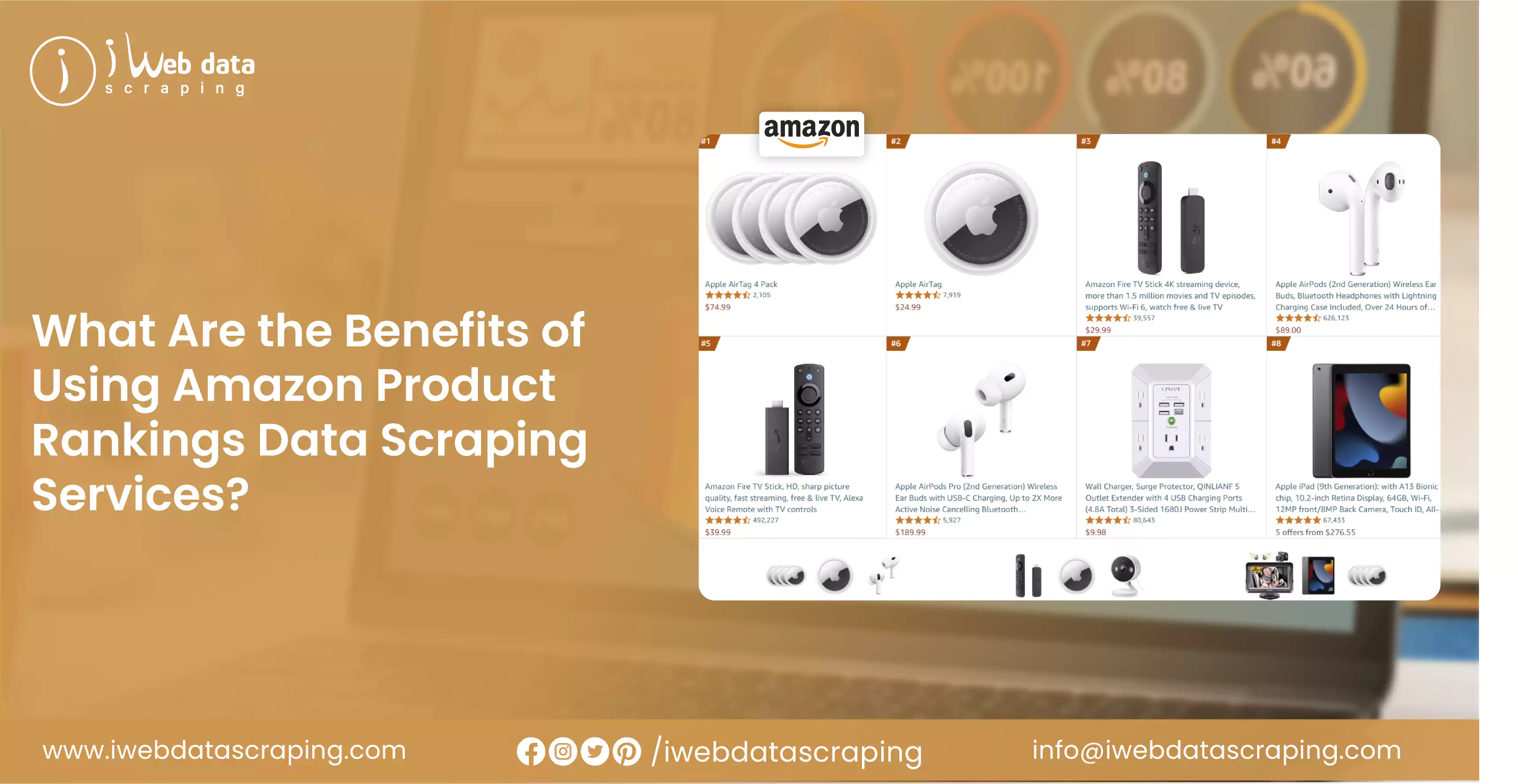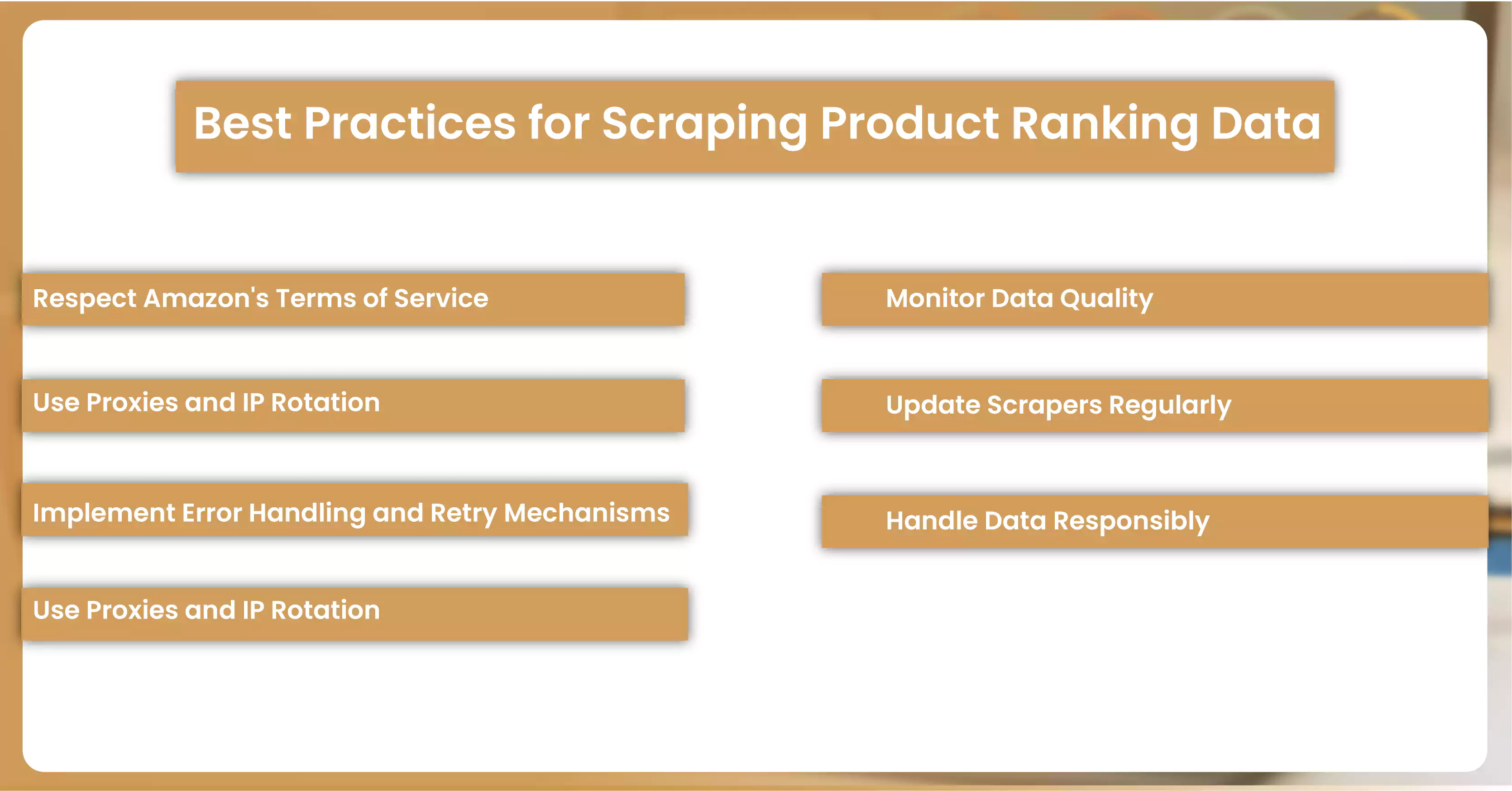
Try your luck — spin the wheel and unlock up to 30% OFF or exclusive freebies!

In the fiercely competitive realm of eCommerce, grasping market trends and consumer behavior is essential. Amazon, a significant force in online retail, provides a wealth of data ideal for various applications such as market analysis, competitive intelligence, and product enhancement. One of the most crucial data points for businesses and analysts is Amazon product ranking data scraping services. These services help extract Amazon product ranking information, offering insights into product performance relative to competitors.
Utilizing these services enables businesses to extract e-commerce website data effectively. This includes understanding market dynamics and adjusting strategies based on product rankings. For comprehensive insights, companies often seek to scrape retail product price data to monitor pricing trends and inventory levels. However, while the data is invaluable, the process involves challenges such as navigating Amazon's anti-scraping measures and ensuring data accuracy. By employing best practices, businesses can overcome these challenges and leverage the data to drive strategic decisions and gain a competitive edge in online retail.

Product ranking data on Amazon is a crucial metric for understanding how products perform compared to their competitors. This data holds significant value for several key reasons:
1. Market Trends: Businesses can gain insights into which products are leading the market by utilizing services that scrape Amazon's top product rankings. Understanding market trends and consumer preferences allows companies to adjust their product offerings and marketing strategies to better align with current demands.
2. Competitive Analysis: Analyzing the rankings of competitors' products through an Amazon product data scraping service provides valuable insights into their strengths and weaknesses. This analysis helps identify market gaps and opportunities for differentiation, enabling businesses to position their products strategically.
3. Optimization Strategies: Knowing which products perform well allows sellers and marketers to refine their strategies. Utilizing Amazon product datasets helps optimize pricing, enhance product descriptions, and improve customer service, which can lead to better sales performance.
4. Inventory Management: Product ranking data is instrumental in managing inventory effectively. By web scraping e-commerce website data, businesses can identify which products are in high demand and which are not. This helps make informed decisions about stock levels, reducing the risk of overstocking or stockouts and ensuring efficient inventory management.
Incorporating these insights through an eCommerce data scraper can significantly enhance business strategies and operational efficiency.

Scraping product ranking data from Amazon involves extracting various metrics, including product positions, reviews, ratings, and other relevant information. Here's an in-depth look at the methods used, incorporating essential tools and services:
1. Web Scraping: is the most common method for extracting data from websites. It involves employing web crawlers or scrapers to navigate Amazon's pages and collect data. Popular tools for this purpose include BeautifulSoup, Scrapy, and Selenium. These tools can automate the data extraction process and handle complex data structures effectively. An Amazon products data scraper systematically extracts and organizes ranking data.
2. Amazon API: Amazon provides various APIs, such as the Amazon Product Scraping API, which offers structured access to product details, including rankings, reviews, and prices. This method is generally more reliable and organized than traditional web scraping, though it comes with usage limits and requires adherence to Amazon's terms of service. The API facilitates detailed and accurate data extraction.
3. Data Aggregators: Some third-party services specialize in aggregating product data from Amazon and other eCommerce platforms. These services provide pre-packaged datasets that are ready for analysis, eliminating the need for manual scraping. However, these aggregated datasets might only sometimes be as up-to-date or detailed as data collected directly through other methods.
4. Manual Data Collection: Manual data collection can be employed for specific needs or smaller-scale projects. This involves visiting Amazon's website directly to record product rankings, reviews, and ratings. While labor-intensive, manual collection can be helpful for targeted data gathering on a limited scale. Scrape Amazon product reviews and ratings using automated methods for comprehensive data collection.
Each method has advantages and challenges, and the choice depends on the project's specific requirements and the scale of data needed.

While scraping product ranking data from Amazon can provide valuable insights, several challenges must be addressed:
1. Data Accuracy: It is crucial to ensure the accuracy of the scraped data. Amazon's website structure and ranking algorithms can change frequently, affecting the reliability of the data.
2. Anti-Scraping Measures: Amazon employs various anti-scraping measures to prevent automated data extraction. This includes CAPTCHA challenges, IP blocking, and rate limiting. Scrapers must navigate these barriers to obtain data.
3. Legal and Ethical Considerations: Scraping data from websites can raise legal and ethical issues. It's essential to adhere to Amazon's terms of service and data usage policies. Unauthorized scraping can lead to legal consequences and damage a business's reputation.
4. Data Volume and Management: Amazon offers vast amounts of data, and managing this data can be challenging. Storing, processing, and analyzing large volumes of data requires robust data management systems and infrastructure.
5. Data Freshness: Product rankings can change rapidly due to fluctuations in sales, reviews, and other factors. Ensuring that the data is up-to-date is crucial for accurate analysis.

To effectively scrape product ranking data from Amazon, consider the following best practices:
1. Respect Amazon's Terms of Service: Always ensure that your scraping activities comply with Amazon's terms of service. This helps avoid legal issues and ensures ethical practices.
2. Use Proxies and IP Rotation: To circumvent IP blocking and rate limiting, use proxies and IP rotation techniques. This helps distribute requests and reduces the risk of being blocked.
3. Implement Error Handling and Retry Mechanisms: Due to potential disruptions and changes in Amazon's website structure, implement error handling and retry mechanisms in your scraping process. This ensures the reliability and completeness of the data.
4. Monitor Data Quality: Regularly monitor the quality of the scraped data to ensure accuracy and relevance. Implement validation checks to identify and address data inconsistencies.
5. Update Scrapers Regularly: Amazon's website and ranking algorithms can change frequently. Update your scrapers regularly to adapt to these changes and maintain data accuracy.
6. Handle Data Responsibly: Ensure that the data collected is used responsibly and by privacy and data protection regulations. Avoid storing or misusing sensitive information.
Scraping product ranking data from Amazon offers valuable insights into market trends, competitive dynamics, and product performance. Utilizing Amazon Product Rankings Data Scraping Services allows businesses to track and analyze product rankings effectively. While the process involves various methods and tools, it also comes with challenges that need careful consideration. By adhering to best practices and focusing on data accuracy and ethical standards, businesses and analysts can leverage eCommerce data scraping from Amazon to drive informed decision-making and gain a competitive edge in the eCommerce landscape.
Experience top-notch web scraping service and mobile app scraping solutions with iWeb Data Scraping. Our skilled team excels in extracting various data sets, including retail store locations and beyond. Connect with us today to learn how our customized services can address your unique project needs, delivering the highest efficiency and dependability for all your data requirements.